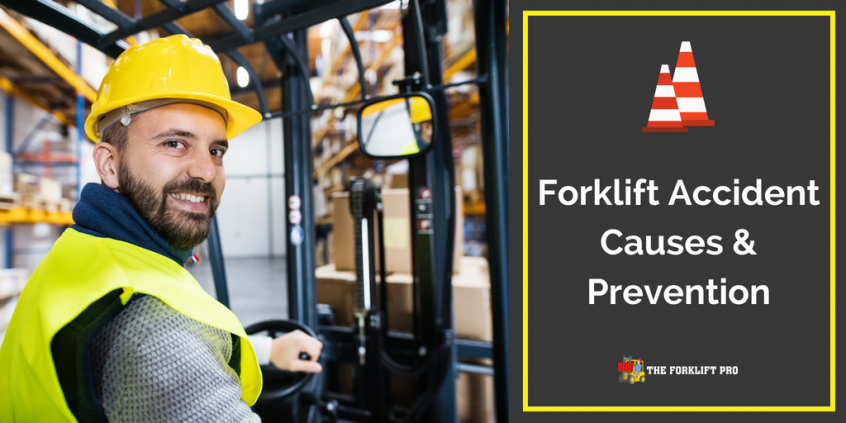There’s a reason so many rules and guidelines for operating a forklift exist. At any given time, you are moving thousands of pounds of product. That’s quite an impressive (and sometimes dangerous) feat. For that reason alone, proper forklift safety procedures must be followed at all times.
As part of National Forklift Safety Day, we’ve outlined some safety basics, refreshers, and guidelines to help your facility safely operate material handling equipment.
What causes forklift accidents?
There are a myriad of issues that can cause forklift accidents. Some of the most common contributors are:
- Not being properly trained on a forklift
- Not completing necessary equipment safety checklists
- Using the wrong forklift for the job
- Cluttered warehouse aisles
- Loading dock obstructions
- Work conditions such as excess dust, noise, or bad lighting
- Overloading your forklift
- Speeding
- Faulty pallet
What do I do if I’m in a forklift accident?
Forklift accidents can be nerve-wracking and frightening for the driver and the witnesses. If you are involved in a forklift accident or have witnessed one, remain calm. Follow protocol established by your employer and call for assistance. If you are unsure of what to do, ask for help.
Forklift accident prevention
Staying vigilant during your entire shift is key to keeping yourself and those around you safe. You assume a lot of personal and workplace responsibility when operating a forklift. Preventing accidents can be accomplished by the following:
- Wear the right PPE gear as instructed by your employer
- Undergo training for each forklift type you operate (and maintaining proper certifications when necessary)
- Stay aware at all times
- Maintain a proper speed for your load and warehouse space
- Be aware of markings and warnings on machinery and on workspace floors
- Watch for pedestrians
- If you are a pedestrian, only walk in designated, marked spaces
Understand why the rules are in place
Strict guidelines are only effective if forklift operators fully understand the consequences of failing to follow them. Having a firm understanding of the risks involved (safety, employment status, etc.) with being lax on forklift safety will help eradicate negligent behavior.
Though it is up to the forklift operator to carry out the rules, it is up to the employer to enforce them at all times.
Know Your Equipment
This tip is two-fold.
Knowing your equipment starts with who you’re purchasing it from. Make sure your forklift wholesaler has a solid reputation and thorough inspection/maintenance process. Tour their facility, ask questions, get to know the used equipment before purchasing, and talk to previous customers to get the full scope of your wholesaler’s work and reputation.
You should also know your equipment from an operational standpoint. OSHA requires facilities to adopt a training program under OSHA guidelines and rules, which includes refresher training and training for each type of forklift.
At The Forklift Pro, we take the time to assess your needs in order to provide you with the right equipment. Our intake process is intensive and thorough, and our dedicated sales team always welcomes questions pertaining to our used forklifts. Contact us today to buy or sell your used material handling equipment.

